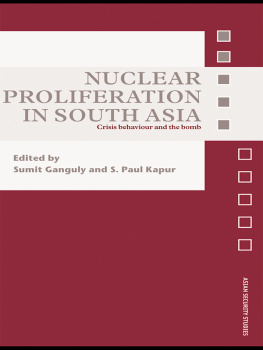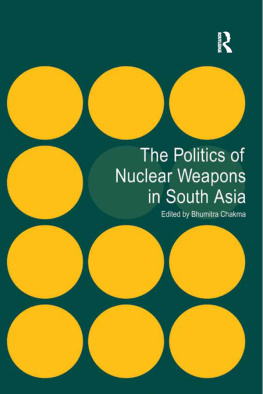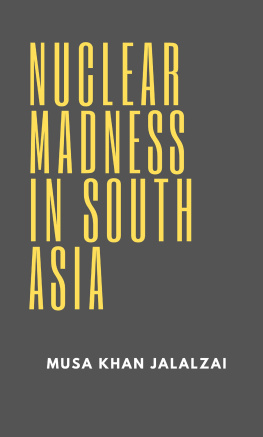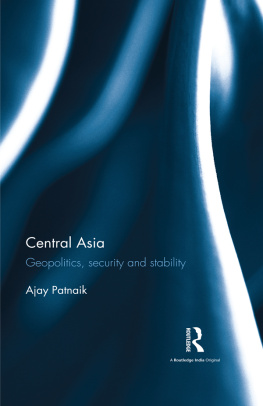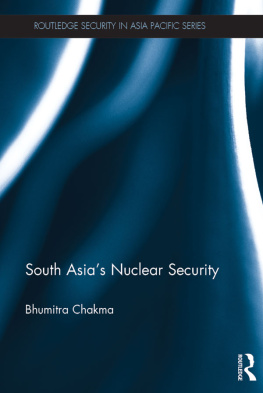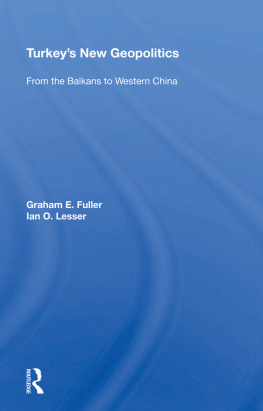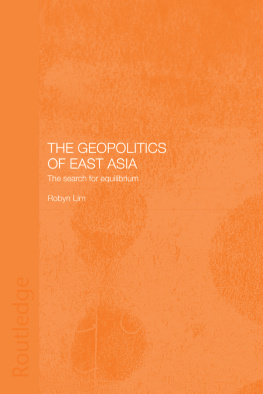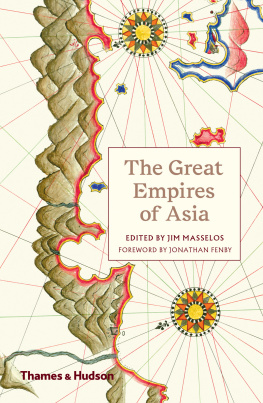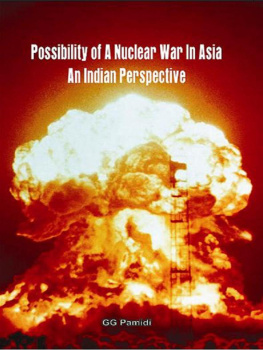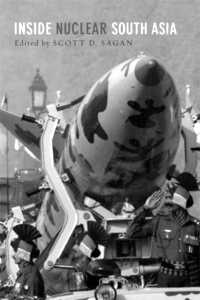
The Geopolitics of South Asia
South Asia is one of the world's great cultural heartlands, and home to nearly one quarter of the earth's population. It is the cradle of two of the world's oldest and most important religions, Hinduism and Buddhism. It has also embraced Islam, and there are now more MuGims here than in the Middle East and North Africa combined. This enthralling volume tells the story of how the earth's shifting continents moulded this cockpit, of how the great Hindu, Mughal and British Empires in turn came to dominate it, each leaving their marks on the geography and cultures of the region, and on their ideologies and political structures.
The analysis is woven around the three major forces of integration; 'identitive' forces - the bonds of language, ethnicity, religion and ideology; 'utilitarian' forces of common material interest; and 'coercion'- the institutional use or threat of physical violence. By studying the interplay of these forces over time, set against the geography of South Asia, Professor Chapman shows how the organization of territory - as states and empires, as monarchic realms and representative democracies - has been central to the region's cultural and economic development. Anyone who is planning on carrying out research in South Asia or indeed anyone who simply wishes to understand more about this cultural heartland should read this book.
To the memory of Peter Gould inspirational geographer and supportive friend
The Geopolitics of South Asia
From Early Empires to the Nuclear Age
2nd Edition
Graham P. Chapman
Department of Geography,
Lancaster University, United Kingdom
First published 2003 by Ashgate Publishing
Reissued 2018 by Routledge
2 Park Square, Milton Park, Abingdon, Oxon OX14 4RN
711 Third Avenue, New York, NY 10017, USA
Routledge is an imprint of the Taylor & Francis Group, an informa business
Copyright Graham P. Chapman 2003
Graham P. Chapman has asserted his moral right to be identified as the author of this work in accordance with the Copyright, Designs and Patents Act, 1988.
All rights reserved. No part of this book may be reprinted or reproduced or utilised in any form or by any electronic, mechanical, or other means, now known or hereafter invented, including photocopying and recording, or in any information storage or retrieval system, without permission in writing from the publishers.
Notice:
Product or corporate names may be trademarks or registered trademarks, and are used only for identification and explanation without intent to infringe.
Publisher's Note
The publisher has gone to great lengths to ensure the quality of this reprint but points out that some imperfections in the original copies may be apparent.
Disclaimer
The publisher has made every effort to trace copyright holders and welcomes correspondence from those they have been unable to contact.
A Library of Congress record exists under LC control number: 2002038251
ISBN 13: 978-1-138-70798-6 (hbk)
ISBN 13: 978-1-138-70797-9 (pbk)
ISBN 13: 978-1-315-19984-9 (ebk)
This book is an introduction to the Indian Subcontinent and its three largest countries - India, Pakistan and Bangladesh. I hope and believe that it will be of use to students in history, geography, development studies, sociology and politics - and also to the lay reader who simply wishes to understand a little about this cultural heartland. I have long felt that students in many subjects and many departments are asked too soon to get down to the details of this period or that, this part of India or Pakistan, or that, before they had some understanding of the broader context. I have tried to provide that broader context - to give the kind of launching pad from which those who are interested in learning and researching in more detail can then move on. I have tried to do so as much from an emotive point of view as a detached and 'objective' point of view. What I have therefore tried to do is to tell a story chronologically - beginning in the geological past and continuing to the present day. At different points in this chronological story I take time to spin out some of the threads that might otherwise have been dealt with systematically - for example on caste, or on the management of water resources. The organising Iynch-pin of this story is a geo-political one. The theme to which the book constantly returns is the relationship between society and the organisation of territory - as states and empires, as monarchic realms and as representative democracies - and the development culturally, linguistically, economically of the ever-changing pattern of states. For this reason, this book could not have been published by an Indian, Pakistani or Bangladeshi author in his/her own country. Both peer pressure and legal constraint forbid the telling of disputes from an opponent's point of view, and prohibit the publication of maps with counterclaims shown clearly on them.
Human society exists because of what the word society implies. It implies a degree of co-operation and order or, in other words, the antithesis of anarchy. But anarchy can and does break out, at any scale from violence within the family to the outbreak of war between states. Throughout history social organisations of increasing scale have tried to control anarchy within, thereby implicitly leaving a residual anarchy without. Family units are grouped in tribes or clan units, traders and artisans are grouped in leagues and guilds, amalgams of both are subjected to empire. Empires then both wax and wane. In Europe a new system of states emerged after the anarchy of the 30 Years War, when the Treaty of Westphalia was signed in 1648 and the final vestiges of the Holy Roman Empire were dismantled. The 'modern' states gained internal strength and cohesion, but were competitors with each other, and quite frequently at war. For this reason the international system of states which Europe has more or less imposed on the world has been called The Anarchical Society by Hedley Bull (1977), an analyst of international relations. The story of South Asia is a story partly about its indigenous political and cultural forms, and partly the story of the invasion and implantation of foreign forms, including most recently the European idea of sovereign states. These successor states have engaged in competitive warfare - in other words have resorted to international anarchy. The book, therefore, is also concerned with South Asia's engagement with Europe - Britain in particular - and the external world.
I cannot conceal the fact that I am British and that that fact on its own could explain why I became interested in South Asia in the first place. The British involvement has left permanent marks in British culture as much as the British left marks in South Asia. Quite a few words in common currency in English have their origins in India. Bungalows are houses of Bengal: their inhabitants may sleep on divans which take their name from the Mughal tax officials - the Diwans - via the cushions they sat upon - and perhaps asleep on their divan people wear their pyjamas - the 'leg garment' of Punjab. The juggernauts that oppress small rural roads in England are named not after Prussian militarists, but the Lord Jagganath, whose image is taken through Puri in Orissa (one of the states of India) in a wheeled chariot, beneath whose wheels his devotees would throw themselves to be crushed. Thugs originally committed Thuggee, ritual murder, in the name of the Gods of destruction. Weekend sailors sail in Catamarans, though not the 'bound wood' of the original Tamil. The army wears khaki ('khak' means dust) uniforms. The Labour party has Holy Cows, expert commentators are pundits, and we hear of the Moguls (Mughals) of British Industry. The involvement has of course not ended. Since the 1950s Britain has received several waves of immigrants of South Asian descent, directly from India, Pakistan and Bangladesh, and also indirectly from the Asian communities expelled from east Africa. The South Asian diaspora in Britain is a large one, contributing much to the new multi-cultural Britain. I do not know, but I suspect, that more mosques, Sikh gurdwaras and Hindu temples have been built in the last two decades than Christian churches (some inhabiting the disused churches and chapels - a kind of architectural apostasy?). There are now more people of South Asian descent living in Britain than ever there were Britons in India. And both the marriage trade and the tourist trade sends a steady stream of Indians, Pakistanis, Bangladeshis and Britons in both directions. The British in general seem to have fallen in love with Indian curries - and interestingly the title 'Indian' restaurant retains the imperial idea of greater India - since only a few style themselves as specifically Pakistani or Bangladeshi cuisine. But for me the most enduring connection is the number of close friends I have made in India, Pakistan and Bangladesh and with immigrant friends from South Asia living in Britain and elsewhere. This book is written in warmest appreciation of these friendships. I hope I have written something that will help those who have no contact with, and little understanding of, South Asia to learn something of the outlines of the history and culture and politics of this cultural heartland - home to one quarter of the world's population.




